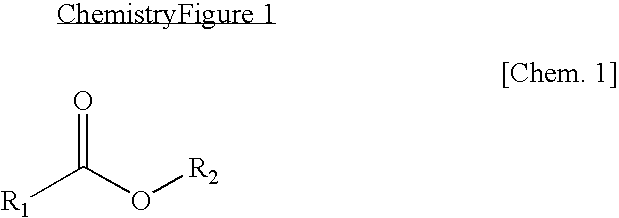Non-aqueous electrolyte lithium secondary battery
a lithium secondary battery, non-aqueous electrolyte technology, applied in the direction of non-aqueous electrolyte cells, cell components, electrochemical generators, etc., can solve the problems of lithium secondary batteries containing a large amount of ethylene carbonate, slow down of sei film, and increasing thickness of batteries
- Summary
- Abstract
- Description
- Claims
- Application Information
AI Technical Summary
Benefits of technology
Problems solved by technology
Method used
Image
Examples
embodiment 1
[0047]LiPF6 was added to a mixed organic solvent in which ethylene carbonate (EC) and ethyl propionate (EP) are mixed in a volume ratio of 3:7 to make 1M LiPF6 solution, and then 0.1 weight % of LiBF4 based on the total weight of a non-aqueous electrolyte was added thereto to make a non-aqueous electrolyte.
[0048]Then, a pouch-type lithium secondary battery was manufactured in a common way by injecting the non-aqueous electrolyte for a lithium secondary battery prepared as in the above to a pouch-type battery using LiCoO2 as a cathode active material and artificial graphite as an anode active material.
embodiment 2
[0049]A pouch-type lithium secondary battery was manufactured in the same way as in the Embodiment 1, except that 0.2 weight % of LiBF4 was used.
embodiment 3
[0050]A pouch-type lithium secondary battery was manufactured in the same way as in the Embodiment 1, except that 0.5 weight % of LiBF4 was used.
PUM
| Property | Measurement | Unit |
|---|---|---|
| discharge voltage | aaaaa | aaaaa |
| charging/discharging voltage | aaaaa | aaaaa |
| freezing point | aaaaa | aaaaa |
Abstract
Description
Claims
Application Information
 Login to View More
Login to View More - R&D
- Intellectual Property
- Life Sciences
- Materials
- Tech Scout
- Unparalleled Data Quality
- Higher Quality Content
- 60% Fewer Hallucinations
Browse by: Latest US Patents, China's latest patents, Technical Efficacy Thesaurus, Application Domain, Technology Topic, Popular Technical Reports.
© 2025 PatSnap. All rights reserved.Legal|Privacy policy|Modern Slavery Act Transparency Statement|Sitemap|About US| Contact US: help@patsnap.com



